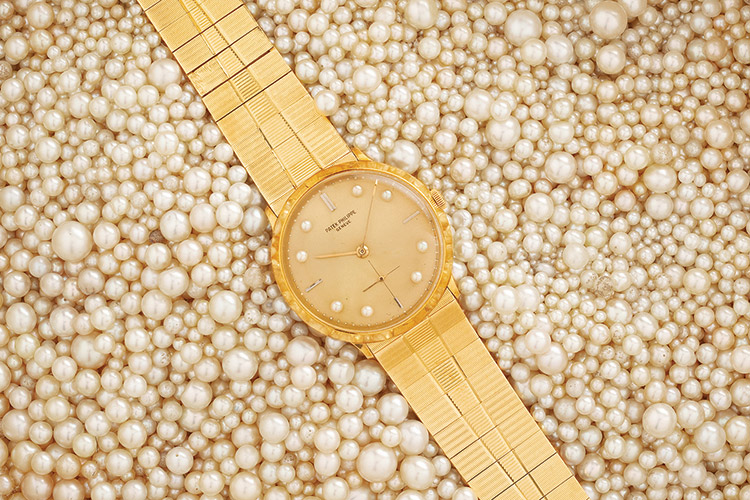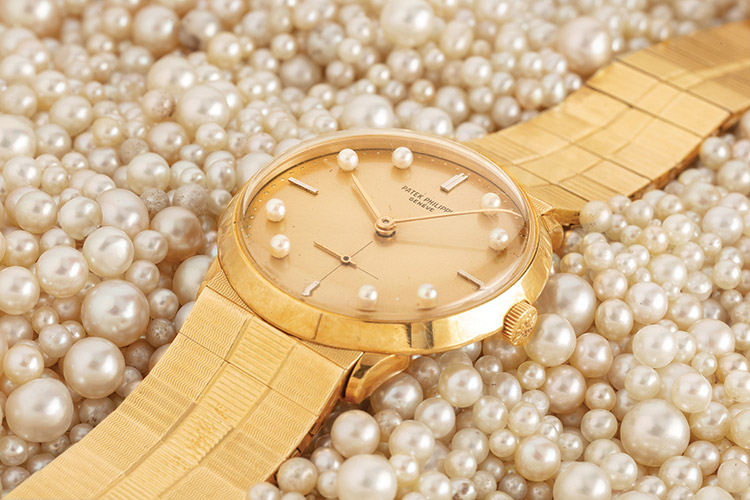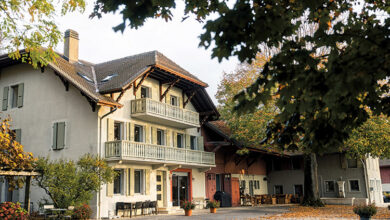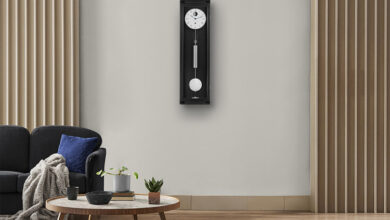
A new piece of horological regional history came to light recently when Christie’s Watches Online: The Dubai Edit exhibited their offerings. In pride of place was a sublime 18k yellow gold Patek Philippe ref. 2573 ‘Pearl of the Arabian Gulf’ of 1958. We bring you the story of this unusual ‘Pearl’
Bahrain has been synonymous with the trading of pearls for centuries. So, when the island’s Emir commissioned a trio of bespoke watches from Patek Philippe in 1958, it was inevitable that they should be adorned with these shimmering jewels of the sea.
The ancient Epic of Gilgamesh tells how the hero-king journeys to the land of Dilmun – the island of Bahrain – in search of a ‘magic plant’ or ‘hidden secret’. He ventures out to sea and ‘ties his feet with heavy stones’. The weight of the stones pulls him down to depths where the seawater is sweet. Gilgamesh seizes the magic plant where it grows, cuts the stones from his feet, and lets ‘the sea cast him upon its shore’.
This episode reads almost like a factual description of pearl-diving, as practised in Bahrain for centuries. Pearls grow and ripen, after all, like berries in a marine orchard. And even the detail about the sweet water rings true: fresh springs bubble up from the seabed off the Bahraini coast; they are part of what gives the pearls their special lustre.
So, in 1958, when Emir Salman bin Hamad Al Khalifa I privately commissioned a watch from Patek Philippe, it was always going to feature the incomparable pearls of Bahrain. The watch commissioned by the Emir is believed to be a bespoke variant of the Calatrava reference 2573, launched in 1956.
The pearls are here used as hour markers – and they make a striking adornment to the dial. Eight Bahraini seed pearls are grouped between the four cardinal points. Arranged in this way, they look like otherworldly eyes – the Sumerian term for pearls was ‘Fish eyes’. They gaze serenely back at the wearer: it is as if the watch is watching you.
To show the pearls to the best advantage, they have been placed atop the dial like tiny billiard balls on a golden table. The daring and the sheer craftmanship of this watch become apparent when you look at it sideways on. From any raking angle you can see how the hands are raised on an elongated central pinion, so that they are able to sweep over the top of the pearls. The long minute indicator is angled near its point, like a stylised arm elegantly bent at the wrist. It could be the outstretched hand of a pearl diver, in the act of harvesting sea gems.
The architecture of the case was adapted and enhanced to make all this visible. The bezel is steeper and wider than on other 2573s. It forms a high circular wall that contains the dial along with the pearls. The domed crystal increases the overall height of the case still further. Together, these design changes lend a pleasing heft and presence to the case – a miniature showcase in which the pearls are on display.
And like the pearls that Gilgamesh sought in Bahraini waters, this configuration was for many years a hidden secret, an unsolved mystery in the world of horology. It was long known that in the vaults of Stern Frères, owners of Patek Philippe, there was a picture showing a watch with these pearl markers. But no one had any clue as to who had commissioned it, where it might be, or whether it was a one-off.
That puzzle was partly solved in 2015, when a watch matching the archive image was offered for sale at Christie’s in Geneva. The Bahraini connection emerged at that time – but the question remained: was it the only one? No one was certain. Then, in 2018, a second watch came to market. It too was in rose gold, but with a different dial. So, there were two. But two alone? So it seemed – until now.
The present watch is the third Pearl of Bahrain to emerge, and it may possibly be the last. The serial number tells us that it was the first to be created – and it is the only one made from yellow gold.
That sunny colour, which is also the colour of the desert, makes a stunning match for the lustrous seed pearls. One could easily argue that this watch is the most perfect and most desirable of the three, the central panel of a horological triptych containing 24 pearls in all – one for each hour of the day.
This piece of a fabled regional history sold for $ 214,200. There was a time when Bahraini pearls were considered more precious than gold. This unique piece unites time, pearls, and gold in one astonishing object.

Text and images credit: Christie’s





